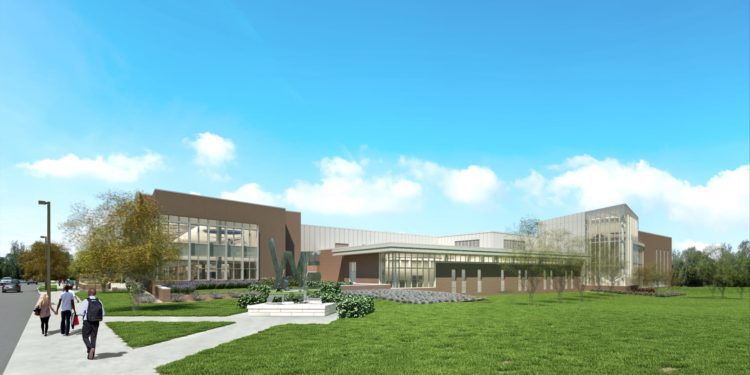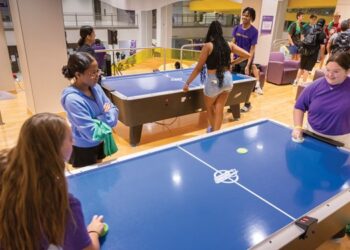Project: Intramural Building Expansion at Penn State
Mission: “To provide facilities that supported services the students on this campus desired in terms of recreational needs,” said Hall. “To really bring Penn State into the modern era of collegiate recreation facilities.”
Completion Date: August 2017
Architects: Moody Nolan
The old Intramural Building at Penn State University is nothing but a shell of its past. Over the past five years, through a series of phased projects, the building has been completely re-vamped and transformed. The entire project cost around $85 million to complete.
Phase one focused on fitness, adding 19,000 square feet of strength and cardio fitness space to the front-end of the building, along with four group exercise studios. Phase two included the addition of three full-sized basketball courts, expanding the running track, a total renovation of the locker room spaces and more.
Phase three, which is scheduled to be complete in August 2017, will bring in the ‘wow’ factor with an indoor synthetic field, a 42-foot climbing wall and bouldering area and four squash courts.
“We also built out the basement space to give adventure recreation an office space,” said Laura Hall, the senior director of recreation at Penn State. “We built out a yoga studio and a wellness suite where we collaborate with campus partners from student health services and kinesiology from the academic side to bring a comprehensive delivery of wellness services to the campus, so that is very exciting as well.”
Up until two years ago, Campus Recreation was still a part of the Athletics department at the university. Now, as their own entity and with this new expansion, Hall sees great change on the horizon for the department. “The one fantastic thing I discovered early on here is we have a really strong professional staff and they are excited to be looking at what other campuses are doing, benchmark ourselves and really transform ourselves on behalf of the students on campus,” explained Hall. “I think what you see today will be dynamically different than what you will see five years from now in every sense.”
Hall explained the biggest challenge when undergoing any sort of project like this is determining the highest priorities and staying focused on those. “There is always such a wide breadth of opportunities and needs of our students, so determining the priority is always a challenge,” she said. “I tend to focus a lot of attention on that aspect. Am I making the right call in forecasting the future recreation needs of our students?”
In order to overcome this, Hall suggested rooting your decisions in assessment and data. Listen to student feedback so you have a good sense of student wants and needs. “I think if you start there, you can’t go wrong,” said Hall. “We can’t always predict the future, but we can take our best guess. If you look at what the current students are saying and do some serious assessment and understand the needs of your students, that is a fantastic foundation to work from.”
Learn more about the Penn State renovation and expansion project here.










